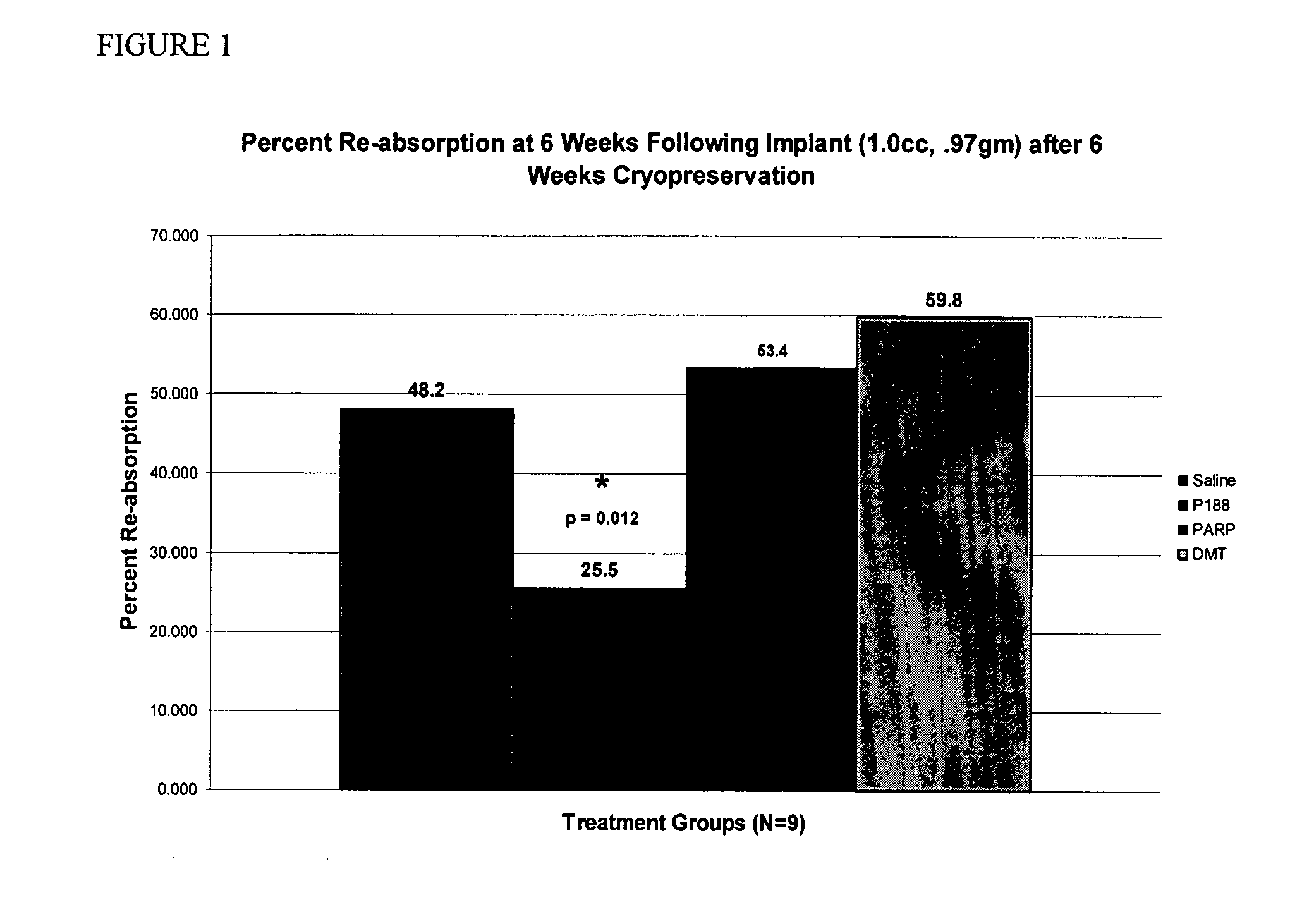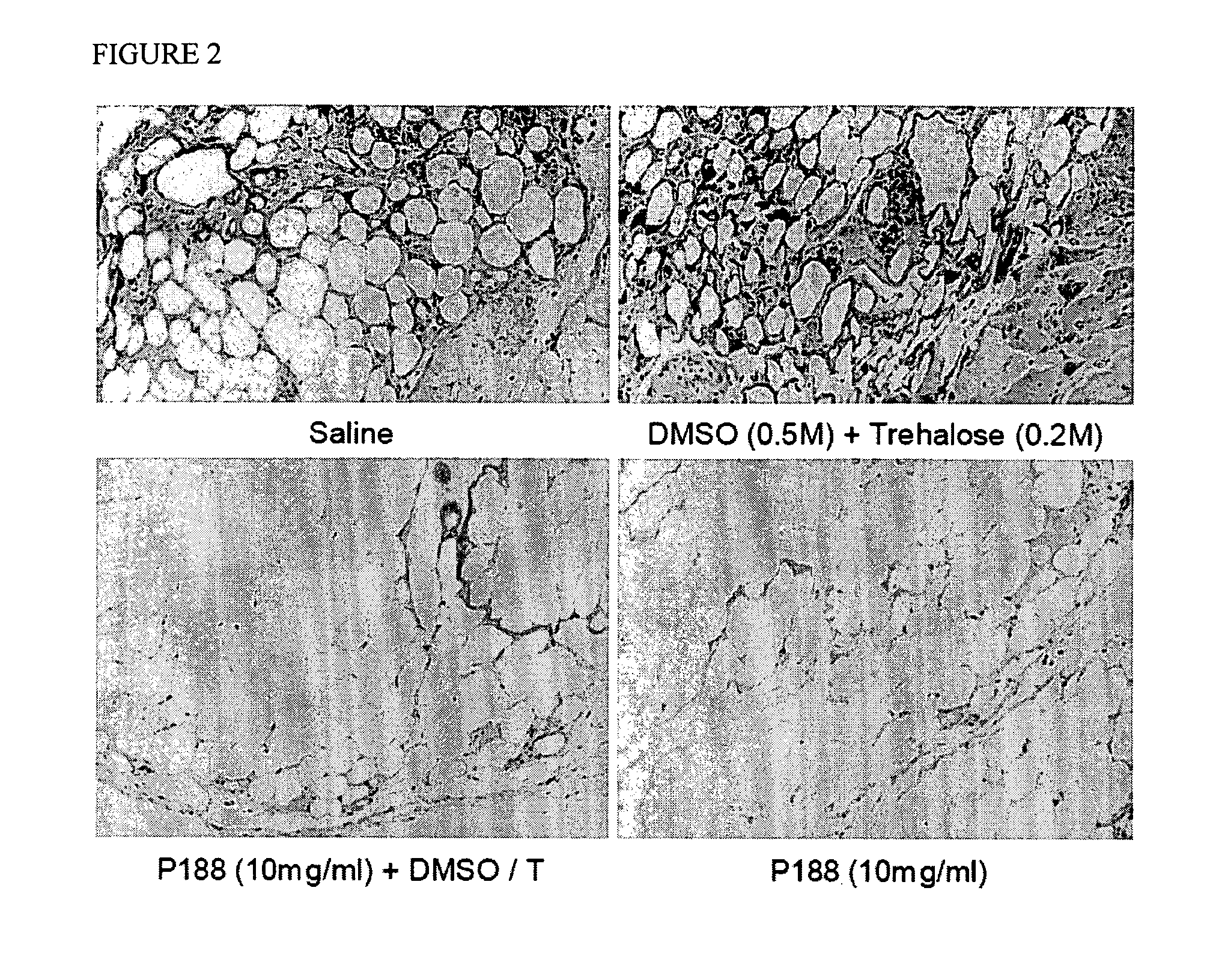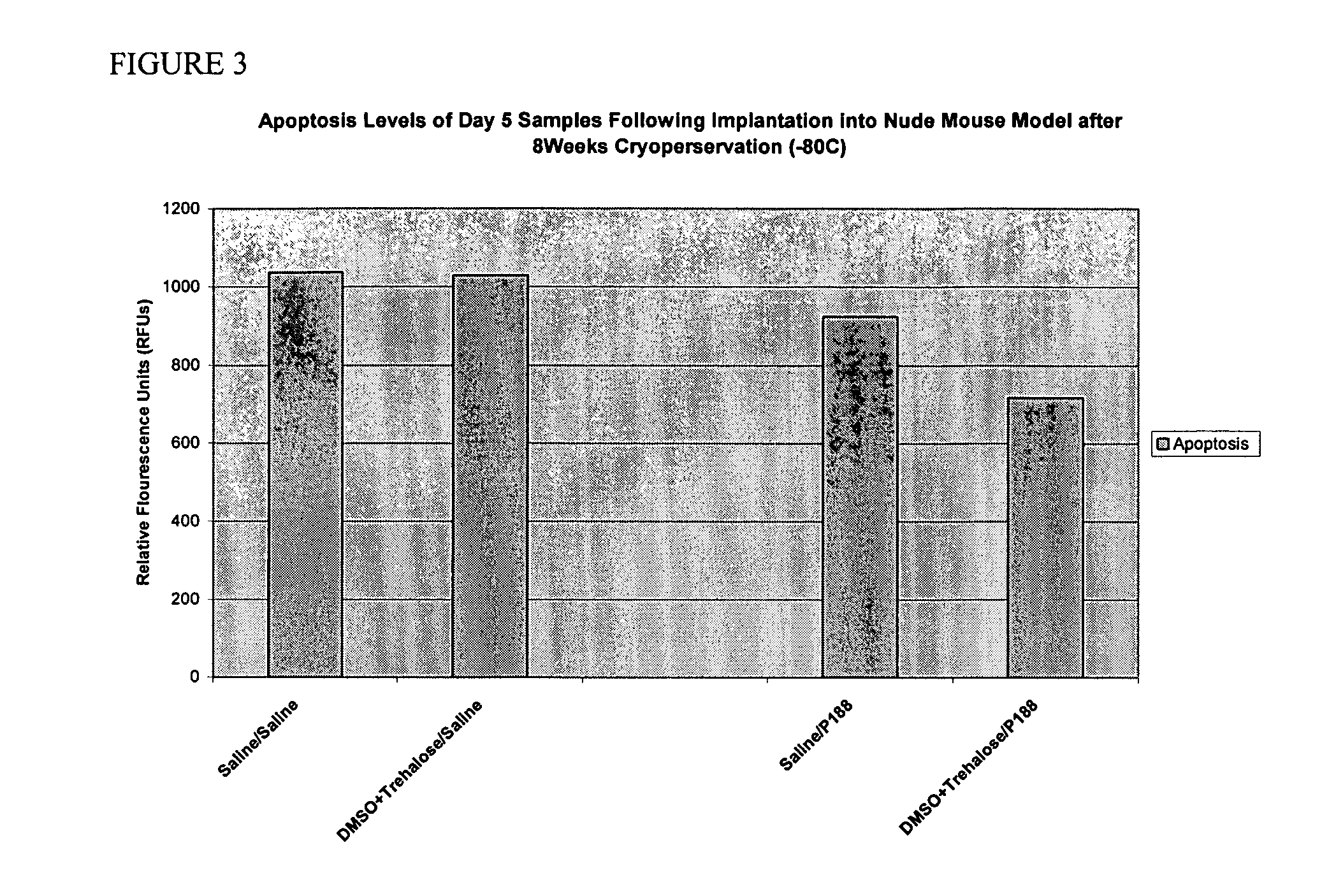Methods and compositions for improving the viability of cryopreserved cells
a cryopreserved cell and cell technology, applied in the field of polymers and methods for improving the can solve the problems of low cell viability post-thaw, low cell viability of cryopreserved cells, and the current limitation of cryoprotective agents, etc., to achieve successful and predictable cell recovery, improve cryopreserved cell viability, and improve the effect of cryopreserved cell viability
- Summary
- Abstract
- Description
- Claims
- Application Information
AI Technical Summary
Benefits of technology
Problems solved by technology
Method used
Image
Examples
example 1
An Agent for Improved Cryopreservation of Adipose Tissue
[0091]Background: In a study of adipocyte resuscitation using a tri-block copolymer (P188) we have discovered a significant improvement in graft preservation. We hypothesized that a similar strategy may be utilized to protect frozen fat as well. In this study cryo-banked adipose tissue was treated with various agents as a protectant followed by injection into a nude mouse model and serial explantation and analysis.
[0092]Methods: Fat was obtained via human liposuction aspirates, washed with saline and centrifuged. Aliquots of fat were treated with one of four agents: polymer (P188), PARPi (anti-apoptosis control), DMSO+Trehalose (gold standard), or saline as a negative control. The four non-DMSO containing groups were snap frozen and stored at −80° C. for six weeks, the DMSO group was slow cooled at −20° C. (24 hrs) then stored at −80° C. for six weeks. Thawed samples where then implanted into nude mice (1.0 cc and 0.97 g weight...
example 2
Viability of Transplanted Cryopreserved Cells Treated with a Polyether During the Thawing Process
[0095]The effectiveness of P188 used during the thawing process to reduce the amount of cell death (apoptosis) was evaluated. See FIG. 3. Samples were treated with either saline (control) or DMSO+Trehalose (gold standard) and then frozen at −80° C. for eight weeks. Samples were then either thawed in saline or thawed in P188 solution. After thawing the each group was injected in 1.0 cc aliquots into a nude mouse model. On day 5 injections were sampled from each group and the amount of cell death in the graft was measured using fluorescent labels. A comparison of P188 treated groups to the saline treated groups, indicates reductions in the amount of cell death when P188 is used during the thawing process. These results indicate that P188 improves outcomes by targeting injury during the thawing period irrespective of the use of a prior cryopreservative.
[0096]The functional improvements in f...
example 3
Protocol for Fat Cryopreservation, Thawing and Transplantation
[0098]Fat is first isolated from a subject using liposuction. The fat is dispensed into aliquots of about 30 ml in syringes, e.g., 60 ml syringes. A cryoprotectant is optionally added to the aliquots. The fat aliquots are then frozen at −80° C. The fat aliquots are stored for later use. Just prior to thawing an equal volume of a polymer, e.g., polyether, typically P188, solution is added to the cryopreserved fat aliquot. The cryopreserved fat aliquot is then thawed in the presence of the polymer by incubation in a water bath at about 37.5° C. for about 20 min, followed by further incubation on gentle rocker for about 15 min at about 37.5° C. The sample is then spun and transplanted into a subject.
PUM
 Login to View More
Login to View More Abstract
Description
Claims
Application Information
 Login to View More
Login to View More - R&D
- Intellectual Property
- Life Sciences
- Materials
- Tech Scout
- Unparalleled Data Quality
- Higher Quality Content
- 60% Fewer Hallucinations
Browse by: Latest US Patents, China's latest patents, Technical Efficacy Thesaurus, Application Domain, Technology Topic, Popular Technical Reports.
© 2025 PatSnap. All rights reserved.Legal|Privacy policy|Modern Slavery Act Transparency Statement|Sitemap|About US| Contact US: help@patsnap.com



